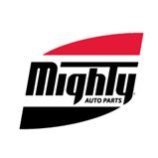-
Welcome to Auto Parts Forum
Whether you are a veteran automotive parts guru or just someone looking for some quick auto parts advice, register today and start a new topic in our forum. Registration is free and you can even sign up with social network platforms such as Facebook, X, and LinkedIn.
Improving the auto water pump's performance
-
Similar Topics
-
By Counterman
link hidden, please login to view and link hidden, please login to view shop owners and auto parts professionals set sail this June on the link hidden, please login to view, where over 60 attendees visited the Last Frontier – Alaska. Departing from Seattle, Washington, trip attendees experienced an all-inclusive VIP experience on the Royal Caribbean Ovation of the Seas cruise ship from June 14-21, traveling up the Alaskan coastline with stops in Sitka, Skagway, Juneau and Victoria, British Columbia Canada.
During the months of September, October and November 2023, professional technicians and shop owners had the opportunity to earn entries on MyPlace4Parts with every qualifying invoice and a chance to be a grand-prize winner. Each winner and their guest joined Auto Value and Bumper to Bumper hosts as they got ready to depart on their exciting adventure, beginning with a welcome reception and dinner in Seattle. Once onboard, guests had a 7-night, 8-day adventure packed with activities and shore excursions, the
link hidden, please login to view said. Entries were earned with every qualifying invoice worth $150 from an Auto Value or Bumper to Bumper parts supplier. In addition, MyPlace4Parts users earned automatic bonus entries each day for every $150 increment made through MyPlace4Parts. Beyond the grand prize adventure cruise, there was also a total of $45,000 in gift cards given to 240 other lucky winners.
“This trip has been nothing but amazing, exceeding all our expectations. We are extremely fortunate to be a small part of the Auto Value & Bumper to Bumper family with our parts supplier, Moog Louisville Warehouse,” said Steve Morton, of Morton’s Auto and Truck Repair in New Albany, IN. “We love the 32-year business relationship we have with Moog who are our main supplier for all our parts. We couldn’t do what we do daily without their support and thank them, Auto Value & Bumper to Bumper and their industry partners for this amazing trip!”
Once on the Ovation of the Seas cruise ship, guests were treated to all-inclusive amenities and celebrated the first night on the ship with a group reception and private dinner seating. Each winner and their guest had a unique selection of port excursions, including whale-watching boat tours, ziplining, 4x4s and e-bikes adventures, helicopter rides, dog-sledding experiences, and much more. Each port offered an opportunity for shopping and dining before setting sail to the next destination.
“This was a magical experience and one my wife and I would not have been able to take without the help of our parts supplier, everything from start to finish was amazing,” said Tony Spraggins of Spraggins Auto Repair in Longview, TX, and customer of ABC Auto Parts. “We are so thankful to everyone who helped make this trip possible, including the manufacturers who sponsored our Alaskan Adventure.”
“The Auto Value and Bumper to Bumper promotional sweepstakes events showcase the power of business partnerships,” said Jim Holik, director of marketing for Auto Value and Bumper to Bumper. “The professional shop owners and guests who came on this promotion have a chance to experience once in a lifetime adventures, but also create and build friendships with each other. Our manufacturing channel partners who help with these customer experiences deserve a lot of appreciation and once again we thank them for their continued support.”
The post
link hidden, please login to view appeared first on link hidden, please login to view.
link hidden, please login to view -
By Mighty Auto Parts
The post
link hidden, please login to view appeared first on link hidden, please login to view. When diagnosing engine performance complaints such as misfire symptoms, be advised that several systems and components can contribute to those symptoms. When considering single or multiple misfire codes, some checks may seem farfetched but trust me if not all are considered the symptoms can elude the most experienced technician, resulting in a misdiagnosis. When this […]
The post
link hidden, please login to view appeared first on link hidden, please login to view.
link hidden, please login to view -
By TieRod
Hello everyone, new here. I am curious if anyone has sold parts on eBay or Amazon as a business. I don't just mean selling a few brake pads that you never used or something like that...lol. I mean a real functioning business where you are buying from a wholesaler or direct and then setting up your product online for sale. With that comes replenishment, margins, tax, etc. So I'm curious to know if this is working for anyone and how you got started, what software you are using, best practices, etc.
Thanks,
"Tie" Rod
-
By Alex
We are setting up this topic to share information on any impact the current
link hidden, please login to view has on the auto parts industry. Sourcing, distribution, parts availability, and business impact. General questions and sharing of knowledge are welcome. The WHO has designated this a global pandemic that is already affecting many industries, including most sectors in the automotive industry. Corporate and Independent automotive parts stores are being impacted by repair shop businesses slowing down. As you know, many parts come from China and other parts of the world, which are affected by the current pandemic.
Please share how this is impacting you and what you are seeing.
link hidden, please login to view





Recommended Posts
Join the conversation
You can post now and register later. If you have an account, sign in now to post with your account.
Note: Your post will require moderator approval before it will be visible.